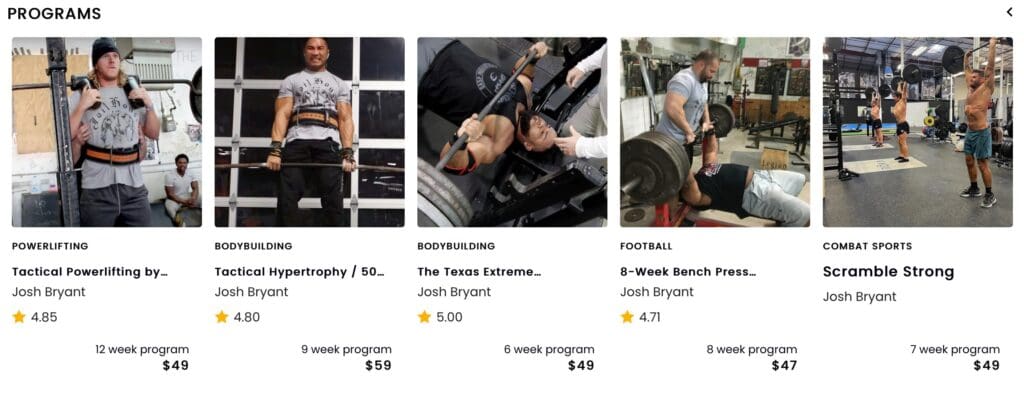Deload to Reload
by: Josh Bryant

NFL teams are not doing full contact scrimmages the day before a game.
Champions in West “By God” Virginia beer pong ain’t getting three sheets to the wind the night before demonstrating their power drinking prowess at local kick n’ stab bar.
You can’t go all out all the time and expect to stay injury free, and if you can’t train you will be as weak as the stream of urine coming out of a botched penis extension procedure!
The most weight ever lifted in the bench press is 782 pounds by my client, Julius Maddox.
Hypothetically, let’s say you bench press 250 pounds and have a modest goal of adding five pounds a week. If you keep this up for a year, you will be bench pressing 510 pounds and in two years you will be on Julius’ heels bench pressing 770 pounds!
Eventually, the buck will stop; it is impossible to only add.
I was first introduced to the “deload” concept by strength icon, Paul Leonard.
Since then, I have renamed it to a reload period simply because reload is more proactive and this is not a blow off week– it gets you reloaded and ready to dominate the pig iron!
A reload week means a period of lower volume and intensity. The reload week is basically an active recovery and chance for you to recover, rebuild and grow from all your hard work.
If week in and week out all you do is train with high volume and hit maximal weights, your central nervous system will fatigue, your muscles will break down and you will feel like a sumo wrestler after an all-night bender.
The key is to follow periods of high intensity and volume with periods of lower intensity and volume. A reload does not need to be a week but that is a good starting point.
On average, I recommend reloading every 3–6 weeks, depending on how hard you train, past injuries and, of course, ability to recover. A good starting point is every fourth week and as you advance and learn your body, this can be customized to your own need.
Reloads should generally be about 70 percent of total volume and intensity of a heavier session. An easy way to do this is just to cut all your working sets down for each exercise by one and multiply all your working weights by 7. Voila–there’s your reload.
In addition to preventing injuries, after a reload, you will gain the strength you’ve put in the hours for. This is, in essence, world-renowned sports scientist Zatsiorsky’s “Fitness Fatigue Model”.
Gaining world-class strength is a long, hard process; the loss of strength is slower.
Some hard-training powerlifters successfully begin tapering periods as far as a month out from a contest. In Vladimir Zatsiorsky’s, Science and Practice of Strength Training, he stated that in a workout of average intensity, the fitness effect endures roughly three times longer than the fatigue effect. If the fatigue aspect from a training session dissipates after two days, fitness gains will persist for six.
Because “light” weights are being used, this is a chance to build your technique which is highly unlikely with weights above 90 percent of your max. A reload week could also be called a technical reinforcement week.
Some lifters may feel reloads are not for them. Should the skinny guy just trying to increase his bench press reload? Of course! Without adequate recovery, you will not become stronger.
Is recovery important to the gal looking to drop a weight class? Of course! The icing on the cake is when you are dieting, your body is in a catabolic state. That means while calories are reduced, so is muscle. The objective is to save as much muscle as possible, so adequate recovery is non-negotiable.
Admittedly, some successful strength athletes do not reload. But, keep in mind, these same athletes train off an intuitive feel so when they feel beat up mentally and physically, they take a couple days off or go lighter and do fewer sets/reps (volume). In other words, an impromptu reload is taking place.
By planning reloads, there will be fewer “off days”; periods of reduced volume and intensity will be cycled into your training, so you won’t have to abruptly stop when your body feels broken. Remember, the body thrives on a routine, a routine requires a proactive approach, not a reactive one.
Powerlifting/Strongman Reload Take-Home Points
- Volume (sets x reps x weight) 60–70% of total workload
- Perform reps in a compensatory acceleration training (CAT) style
- Work on perfecting movement technique
- Reload every three to six weeks (a guideline, not the rule)
Final Thoughts
Strength comes down to how much muscle you have, how efficiently your nervous system works together to produce maximal force and your technical efficiency.
You will not maximize technical proficiency only training with 90 percent of your one-rep max in a lift and your nervous system will be fried.
You will never build serious muscle hypertrophy if you do not super compensate from the training volume and intensity.
Bottom line is, you need to deload to reload!
Try one of Josh’s programs with built-in reloads HERE!

